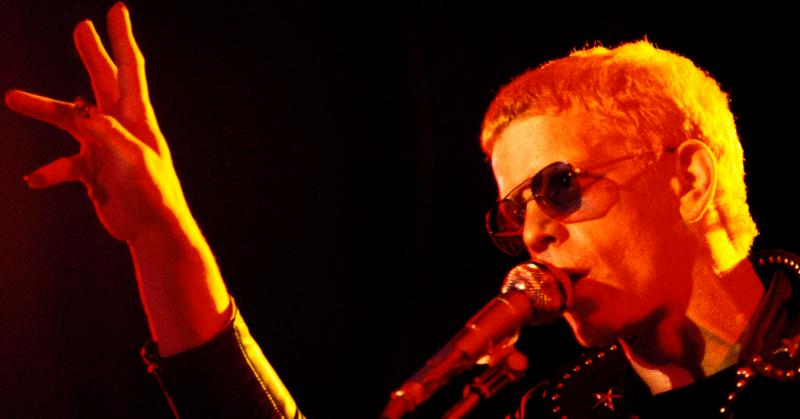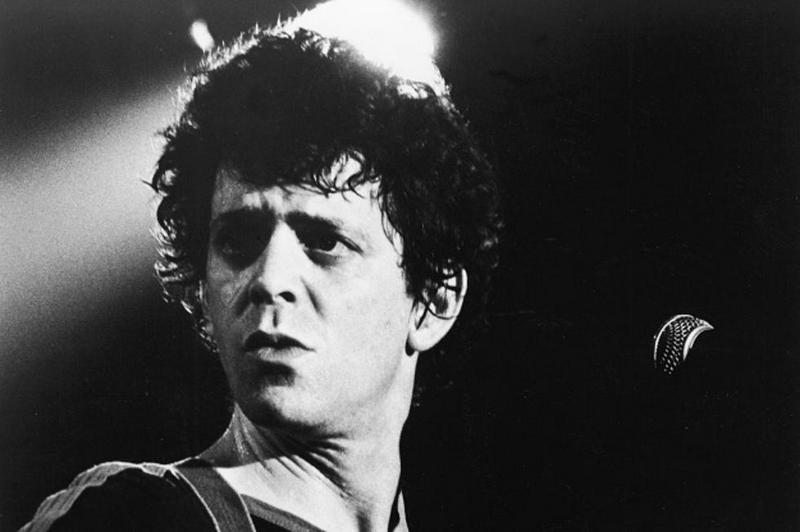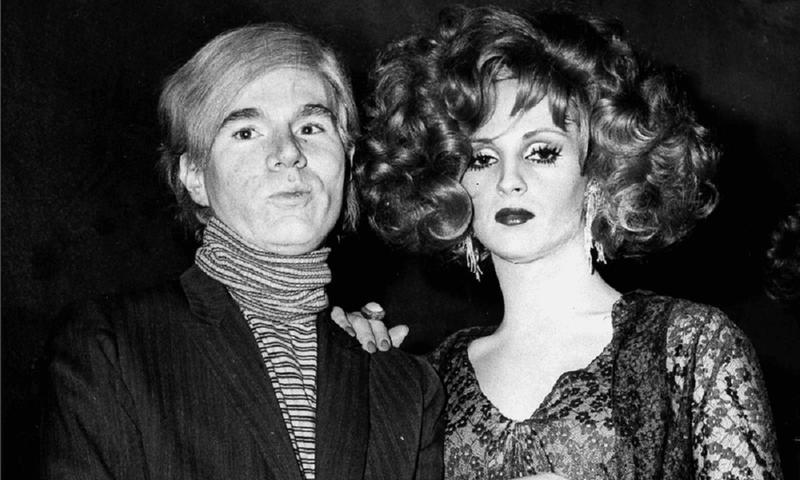Walk On The Wild Side: Lyrics And Meaning Of Lou Reed's NYC Anthem
By | February 19, 2021

"Walk On The Wild Side" by Lou Reed captures characters and an era in its lyrics like few other songs in rock 'n roll history. Reed, the quintessential edgy New York musician, was plugged into the art scene of Andy Warhol and was a catalyst for stripped-down noisy rock that would come to be known as punk (in 1976, he would be featured ono the cover of the first issue of Punk magazine). Reed's New York City of the late '60s and early '70s was an underground, populated by marginalized people whose stories weren't usually told in pop songs -- in fact, outside of certain David Bowie songs and "Lola" by The Kinks (more on that later), Lou Reed's "Walk On The Wild Side" was the only radio hit you were going to hear in 1972 about cross dressers and transsexuals, oral sex and drug use.
And yes, it was a radio hit -- the only one of Reed's career -- rising to #16 on the Billboard Hot 100 and going on to become a fixture on classic-rock radio.
Lou Reed And The Velvet Underground Were Part Of Andy Warhol's Scene

The Velvet Underground began as a collaboration between Lou Reed and John Cale in 1964. In 1965, the Velvet Underground got a nightly gig playing at Café Bizarre in 1965, singing their songs about prostitution and drug use. Here, they met Andy Warhol, who was introduced through Paul Morrissey. The Underground became one of Andy Warhol’s pet projects, and while Warhol was their manager and one of the financiers of their project, Velvet Underground and the German singer/model Nico recorded their album in 1966, released as the group's debut and titled The Velvet Underground & Nico. As they were working with Warhol, they met the superstars, some of whom became the subject of Reed’s later solo song, “Walk on the Wild Side.”
Lou Reed Leaves And Takes Characters With Him

Lou Reed left the Underground in 1970 and released his second solo album Transformer, produced by David Bowie and Bowie's guitarist Mick Ronson, in 1972. "Walk on the Wild Side" was included on that album. According to Reed, Nelson Algren’s 1956 novel, A Walk on the Wild Side sparked the song; Algren’s novel was about the bootleggers, hustlers, and prostitutes on Perdido Street in the French Quarter of New Orleans in the 1930s. Reed’s song was similarly populated with people on the outskirts of society, specifically individuals he had encountered in his own life. Each verse refers to one of the people, the “superstars” he knew from Andy Warhol’s New York studio, The Factory. The individuals who populated the song were Warhol’s muses and would be important in the LGBT movement.
Holly Woodlawn

Holly came from Miami, F-L-A
Hitch-hiked her way across the U.S.A.
Plucked her eyebrows on the way
Shaved her legs and then he was a she
She says, "Hey, babe,
Take a walk on the wild side."
Said, "Hey, honey,
Take a walk on the wild side."
Holly was Holly Woodlawn, a transgender actress who grew up in Miami. After dealing with homophobic bullying, she ran away at the age of 15, and while hitchhiking, she learned to pluck her eyebrows. Warhol discovered her working the streets and put her in some of his films, starting with Trash.
Candy Darling

Candy came from out on the Island
In the back room she was everybody's darling
But she never lost her head
Even when she was giving head
She says, "Hey, babe,
Take a walk on the wild side."
Said, "Hey, babe,
Take a walk on the wild side."
And the colored girls go
"Doo do doo do doo do do doo..."
Candy was Candy Darling, a transgender actress who was the subject of another Lou Reed song, “Candy Says.” Candy grew up on Long Island and frequented Max’s Kansas City, a nightclub and restaurant in New York. Candy was a regular in the backroom, a favorite meeting place for Warhol, and where the Velvet Underground would perform, including Lou Reed until he quit the band. Candy starred in Flesh, and she may have been the subject of a third song, as The Kinks’ "Lola" may be about her. She died of lymphoma at 29.
Joe Dallesandro

Little Joe never once gave it away
Everybody had to pay and pay
A hustle here and a hustle there
New York City's the place
Where they said, "Hey, babe,
Take a walk on the wild side."
I said, "Hey, Joe,
Take a walk on the wild side."
Little Joe was a nickname for Joe Dallesandro, an actor, who starred in a 1968 film, Flesh, about a teenager hustler. Dallesandro has said that he had not met Reed before the song was written and that Little Joe was based on his character in the film. Dallesandro achieved mainstream success in films like The Cotton Club and The Limey. He was also the “crotch model” for The Rolling Stones’ Sticky Fingers cover, designed by Warhol. Additionally, he was the torso for the Smiths’ debut album.
Joe Campbell

Sugar Plum Fairy came and hit the streets
Looking for soul food and a place to eat
Went to the Apollo
You should've seen them go, go, go
They said, "Hey, sugar,
Take a walk on the wild side."
I said, "Hey, babe,
Take a walk on the wild side."
All right, huh
Sugar Plum Fairy may have been a reference to Joe Campbell, an actor who was in a relationship with Harvey Milk from 1955-1962. Campbell played a character by that name in Warhol’s film The Hustler in 1965. However, Sugar Plum Fairy may have also been a reference to a composite of drug dealers in the Warhol circle, as the term was a euphemism for a drug dealer.
Jackie Curtis

Jackie is just speeding away
Thought she was James Dean for a day
Then I guess she had to crash
Valium would have helped that bash
Said, "Hey, babe,
Take a walk on the wild side."
I said, "Hey, honey,
Take a walk on the wild side."
And the colored girls say,
"Doo do doo do doo do do doo..."
Jackie was a reference to Jackie Curtis, another actress and a writer; throughout her career she played both male and female roles. She was mainly a stage actress, and she wrote plays as well. At one point, Curtis wanted to play the role of James Dean in a film. Of course, Dean died in a crash, but the words “speed” and “crash” may have also been drug references, as Curtis was a drug addict; she died of a heroin overdose in 1985.
The Lyrics Caused Controversy

The song did stir some controversy at the time of its release -- although it wasn't the phrase "colored girls," which sticks out like a sore thumb today. Instead, it arose from the reference to oral sex. RCA released an edited version of the song, with the reference removed. The song later stirred controversy, in 2017, when students claimed it was homophobic. However, the people who knew Reed laughed off the accusations; as Hal Willner, Reed’s long-time producer said, the song was a love song to the people Reed knew, and "this song was how the world first heard about these people.”
